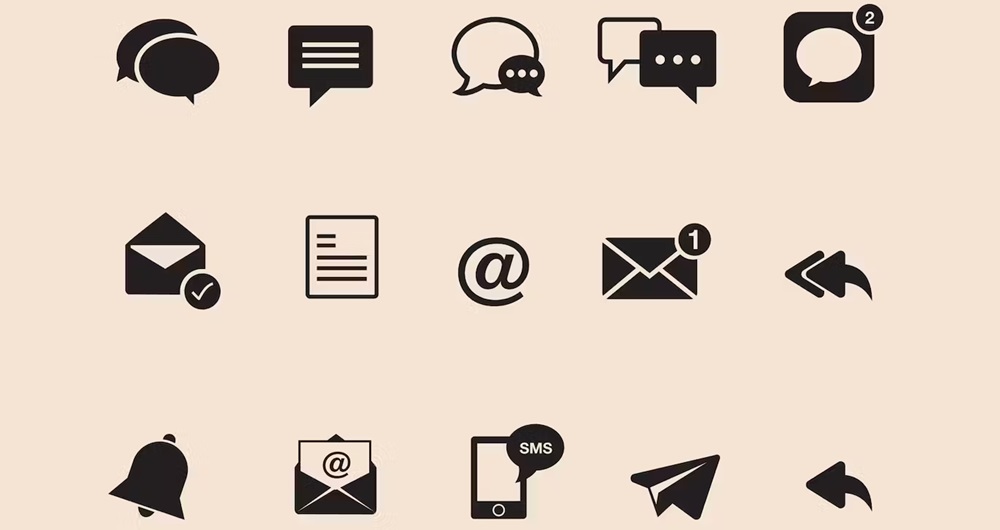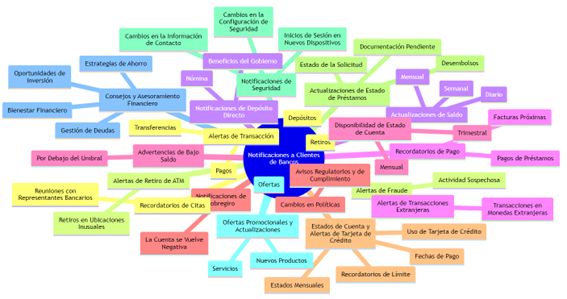
In the rapidly evolving landscape of the financial services industry, the orchestration of banking notifications stands out as a game-changer in enhancing customer experiences and operational efficiency.
As banks navigate the complexities of digital transformation, the strategic deployment of notifications across multiple channels has become a crucial element in securing a competitive edge.
Introduction: The Strategic Imperative of Notification Orchestration in the Banking Sector
In today’s digital-first world, the banking sector is under constant pressure to deliver secure and efficient services and personalized and timely communication. Notification orchestration emerges as a critical strategy in this context, enabling banks to communicate with their customers seamlessly across a variety of platforms.
This concerted approach ensures that customers receive relevant, personalized information precisely when needed, transforming how banks engage with their clientele.
Understanding Notification Systems in Banking
Types of Notifications in Banks
The spectrum of notifications used by banks is broad and multifaceted, encompassing everything from transaction alerts and fraud warnings to personalized financial insights and promotional offers.

These notifications serve as vital touchpoints, reinforcing the security and personalization that customers expect from their banking experience.
Evolution of Notification Systems in Banking
The journey from simple SMS alerts to sophisticated, AI-driven notification systems marks a significant evolution in banking communication. Today’s advanced systems leverage data analytics and machine learning to deliver highly personalized messages catering to customers’ preferences and behaviors. This shift enhances customer engagement and is crucial in fraud prevention and financial management.
Among the most common channels that banks use to send notifications to their customers are:
- SMS text messages: this is a direct and immediate way to alert customers to account activities and potential fraud.
- Email notifications: provide a versatile platform for delivering detailed information, from account statements to promotional content.
- Mobile banking apps: they have become a pivotal channel, utilizing push notifications to offer real-time alerts and personalized financial advice.
- Online banking portals complement these by providing notifications within a secure environment when customers access their accounts.
- Automated phone calls or IVR systems are also employed for urgent communications, such as security alerts.
- Other channels: Banks can use other means of communication to send notifications, such as social media, ATM screens, physical mail, in-app messaging, voice assistants, and smart devices.
Together, these channels reflect the modern banking landscape’s shift towards digital, data-driven communication strategies, significantly enhancing customer experience and security.
Challenges Banks Face When Sending Notifications to Customers
Banks face a set of challenges in delivering notifications to their customers. These challenges arise from the varied nature of notifications—ranging from urgent fraud alerts to routine balance updates—the plethora of channels available for communication, customers’ individual preferences, and the overarching concern of cost.
Each element adds complexity to the design and execution of an effective notification orchestration strategy.
- Diverse Nature of Notifications: Notifications can be urgent, such as fraud alerts, or routine, like balance updates.
- Multiplicity of Channels: With numerous channels at their disposal, banks must navigate the strengths and limitations of each. The choice of channel can significantly impact the delivery and reception of messages.
- Customer Saturation and Preferences: In an era of information overload, customers may experience notification fatigue, leading to disengagement. Banks must carefully balance the frequency and relevance of messages to avoid overwhelming their customers.
Additionally, catering to individual preferences for receiving notifications adds another layer of complexity in ensuring customer satisfaction and engagement.
- Costs: The cost of sending notifications, especially at scale, can be substantial. Different channels carry varying cost implications, with traditional methods like SMS and physical mail being more expensive than digital channels. Banks must consider the cost-effectiveness of their notification strategies, seeking to maximize impact while minimizing expenses.
- Regulatory Compliance: Ensuring that notification practices comply with local and international regulations adds another layer of complexity.
- Technological Infrastructure: Implementing a sophisticated notification system that can manage the distribution of various types of messages across multiple channels requires a robust technological infrastructure.
- Data Security and Privacy: Banks must ensure the highest levels of data security and privacy when sending notifications, especially those containing sensitive information.
Navigating the complex challenges of customer notification requires a strategic, customer-centric approach underpinned by sophisticated technology and an open ear to customer feedback.
By leveraging advanced analytics, artificial intelligence (AI), and machine learning, banks can tailor their communications to meet individual customer needs, optimizing channel usage to ensure messages are seen and acted upon.
Critical events gateways play a key role in this ecosystem, offering a robust platform for managing the distribution of urgent and sensitive alerts, such as fraud warnings or security breaches, ensuring that such critical information is prioritized and delivered swiftly to protect customer interests.
Strategies for Effective Notification Orchestration
Integrating Multiple Channels
In the age of omnichannel banking, integrating notifications across various platforms is crucial. Whether it’s through SMS, email, mobile apps, or social media, a unified communication strategy ensures that customers receive consistent and coherent messages, irrespective of the channel.
Segmenting Audience for Tailored Notifications
Segmentation is key to delivering notifications that resonate with different customer groups’ unique needs and preferences. By analyzing customer data, banks can tailor their messages, ensuring that each notification adds value to the recipient’s banking experience.
Balancing Frequency and Relevance
Striking the right balance between the frequency of notifications and their relevance is vital. Overcommunication can lead to notification fatigue, while undercommunication may leave customers feeling disconnected. The goal is to engage customers with timely and meaningful information that enhances their banking journey.
Technological Frameworks and Tools
Overview of Current Technologies
Optimizing a bank’s notification strategy involves integrating a core set of technologies that enhance real-time decision-making, customer engagement, and compliance. Here’s a revised list of six essential tools for banks focusing on these aspects:
1. Critical Event Gateways: Vital for managing urgent alerts such as fraud notifications or significant account changes, ensuring that critical information reaches customers without delay.
2. Real-Time Analysis and Decision Engines: Tools that offer instant analysis of customer data to make informed decisions on which notifications to send significantly improve communications’ relevance and timeliness.
3. Subscription Management Systems: Platforms that empower customers to set their notification preferences, including message types and preferred channels, enhancing the personalization of the banking experience.
4. Customer Relationship Management (CRM) Systems: CRMs integrate with notification systems to provide a holistic view of customer interactions, enabling more targeted and effective communications based on the customer’s history and preferences.
5. Omnichannel Communication Platforms: These platforms support seamless communication across multiple channels (e.g., SMS, email, push notifications, social media), allowing banks to reach customers via their preferred methods, thus improving engagement and satisfaction.
6. Compliance and Security Tools: Ensuring notifications adhere to data protection and privacy laws is crucial. Tools that manage compliance and bolster security, including encryption and threat detection systems, protect sensitive information, and maintain customer trust.
Using these technologies, banks can develop a notification system that is dynamic and customer-focused, compliant with regulatory standards, and secure against emerging cyber threats.
This strategic approach ensures that banks can effectively communicate with their customers, delivering personalized and relevant notifications while safeguarding their data and adhering to industry regulations.
Selecting the Right Tools for Your Bank
Identifying and implementing the most suitable technology stack is essential for any bank aiming to enhance its notification strategy. When evaluating potential tools, scalability, security, and compliance play pivotal roles.
Additionally, a tool’s ability to integrate with critical event gateways and subscription engines can significantly affect the effectiveness of notification delivery, ensuring that urgent messages are prioritized and preferences are respected.
Leveraging Latinia to Enhance Bank Notification Strategies
Latinia provides a suite of sophisticated tools designed to address the challenges banks face in their notification strategies, integrating seamlessly with the bank’s existing infrastructure to create a dynamic, customer-centric communication ecosystem.
Latinia’s Critical Events Gateway stands as a cornerstone for managing and prioritizing the delivery of urgent notifications. This advanced platform ensures critical alerts, such as potential fraud warnings or significant account changes, are identified and dispatched immediately to the customer, bypassing the clutter of less urgent messages.
Latinia’s Subscription Rules Engine empowers customers to tailor their notification preferences, selecting not only the types of messages they wish to receive but also their preferred communication channels. This level of personalization ensures that customers are engaged with relevant, valuable information, thereby improving satisfaction and loyalty.
Finally, Latinia’s Next Best Action (NBA) tool takes customer engagement to the next level by utilizing real-time data analysis to offer personalized, actionable customer notifications at the most opportune moments. This proactive approach to customer communication enhances the customer experience and drives higher conversion rates and deeper customer relationships.

Measuring the Effectiveness of Notification Systems
Key Performance Indicators (KPIs)
To gauge the success of notification strategies, banks must monitor a set of KPIs, including delivery rates, open rates, and conversion rates. These metrics offer insights into how effectively notifications are reaching and engaging customers.
Customer Feedback and Engagement Metrics
Customer feedback serves as a direct line of insight into the impact of notification strategies. Engagement metrics, such as response rates and interaction levels, further illuminate the effectiveness of each communication.
Continuous Improvement and Adaptation
The landscape of customer communication is ever-changing. Banks must remain agile, continuously refining their notification strategies based on evolving customer preferences and technological advancements. This commitment to improvement and adaptation is key to maintaining relevance and fostering lasting customer relationships in the digital age.
Case Studies: Successful Implementation Examples with Latinia
Banco Bolivariano: Empower Customer Choice
Banco Bolivariano, Ecuador’s fifth-largest bank, focused on elevating customer engagement by embracing cloud technology and personalized communication channels in collaboration with Latinia. The project aimed to empower customers, allowing them to choose how and through which channels they wish to receive notifications, thus putting them in command of their communication preferences.
Recognizing alerts as crucial customer experience touchpoints, the bank integrated Latinia’s critical notification event gateway solution to offer a comprehensive 360º view of the customer’s banking relationship. This approach aligned perfectly with the bank’s digital transformation roadmap, enhancing the customer’s connected experience and positioning the bank competitively against other banks and leading companies in different industries.
Latinia’s flexibility in allowing customers to tailor their notification preferences and its specialized experience in the financial sector were key factors in the bank’s choice, ensuring seamless integration and a significant leap forward in customer-centric communication.
>> READ THE FULL CASE STUDY <<
Banco Industrial: Innovating in Banking Communication
Banco Industrial of Guatemala, the nation’s premier bank, aimed to enhance customer communication by expanding its alert system to include new channels and personalization. This initiative, driven by Carlos Vides, Deputy Manager of Modern Banking, sought to elevate the customer experience by adopting push notifications alongside traditional SMS alerts. The goal was to manage these notifications more effectively, ensuring customers received timely and relevant information.
The bank faced the challenge of seamlessly integrating these new channels into its existing infrastructure without disrupting customer service or altering business processes. Banco Industrial selected Latinia as its partner due to Latinia’s reputation, advanced notification capabilities, and platform flexibility. Latinia’s solution offered personalized service options and ensured reliable message delivery, even switching to SMS if push notifications encountered delivery issues.
The successful remote implementation of Latinia’s system demonstrated the effectiveness of this partnership, positioning Banco Industrial as a leader in customer communication innovation.
Conclusions
The strategic partnerships between banks like Banco Bolivariano and Banco Industrial with Latinia mark a significant leap forward in banking communication. These collaborations highlight the importance of digital transformation, demonstrating how tailored and efficiently managed notifications can substantially enhance customer engagement.
The key takeaway from these case studies is the crucial role of selecting the right technological partners to implement a customer-focused communication strategy that addresses current and future digital demands.
By adopting advanced technologies such as critical event gateways and subscription engines, banks are setting new industry standards for personalized and secure customer communication. This improves the customer experience and also solidifies the bank-customer relationship. Looking ahead, the continuous innovation in digital banking communication will be vital for banks aiming to remain competitive and retain customer loyalty in the digital age.
Interested in learning more about Latinia’s products and services? Contact us, and an expert will address all your questions and advise you on the best solution for your case.
Categories: Cloud & Tech
